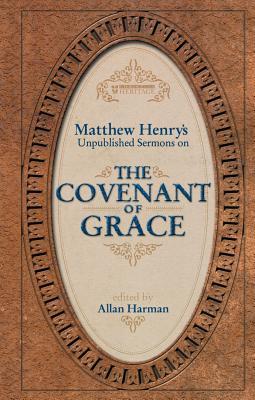The Covenant of Grace
by Matthew Henry
Matthew Henry's commentary on the Bible is legendary. Used by millions it is a testament to his desire to make the whole Bible and its teaching reach the ordinary man.
50 years ago Allan Harman was given a small, well-worn book of handwritten sermon notes. They were Matthew Henry's own notes, from sermons preached to his Chester congregation in 1691/2. Harman started turning these long forgotten sermons into what you hold in your hand today - a revealing, and deeply spiritual work on that most fundamental of doctrines - God's promise of Grace.
Harman filled in the shorthand gaps; added footnotes to help with obscure passages and translated the Greek, Hebrew and Latin quotes. He also provides a biographical introduction to help us picture Henry and see the context in which these sermons were preached.
Henry's delightfully clear style is evident and provides succinct, memorable quotations that will stay with you.
50 years ago Allan Harman was given a small, well-worn book of handwritten sermon notes. They were Matthew Henry's own notes, from sermons preached to his Chester congregation in 1691/2. Harman started turning these long forgotten sermons into what you hold in your hand today - a revealing, and deeply spiritual work on that most fundamental of doctrines - God's promise of Grace.
Harman filled in the shorthand gaps; added footnotes to help with obscure passages and translated the Greek, Hebrew and Latin quotes. He also provides a biographical introduction to help us picture Henry and see the context in which these sermons were preached.
Henry's delightfully clear style is evident and provides succinct, memorable quotations that will stay with you.
BUY NOW
Hardcover, 420 pages
Published November 20th 2002 by Christian Heritage (first published December 31st 1969)
© 2025 Bibleportal.com 版权所有.

Henry's well-known Exposition of the Old and New Testaments (1708-1710) is a commentary of a practical and devotional rather than of a critical kind, covering the whole of the Old Testament, and the Gospels and Acts in the New Testament. After the author's death, the work was finished by a number of ministers, and edited by George Burder and John Hughes in 1811. Not a work of textual criticism, its attempt at good sense, discrimination, its high moral tone and simple piety with practical application, combined with the well-sustained flow of its English style, made it one of the most popular works of its type. Matthew Henry's six volume Complete Commentary, originally published in 1706, provides an exhaustive verse by verse study of the Bible. His commentaries are still in use to this day.
... Show more